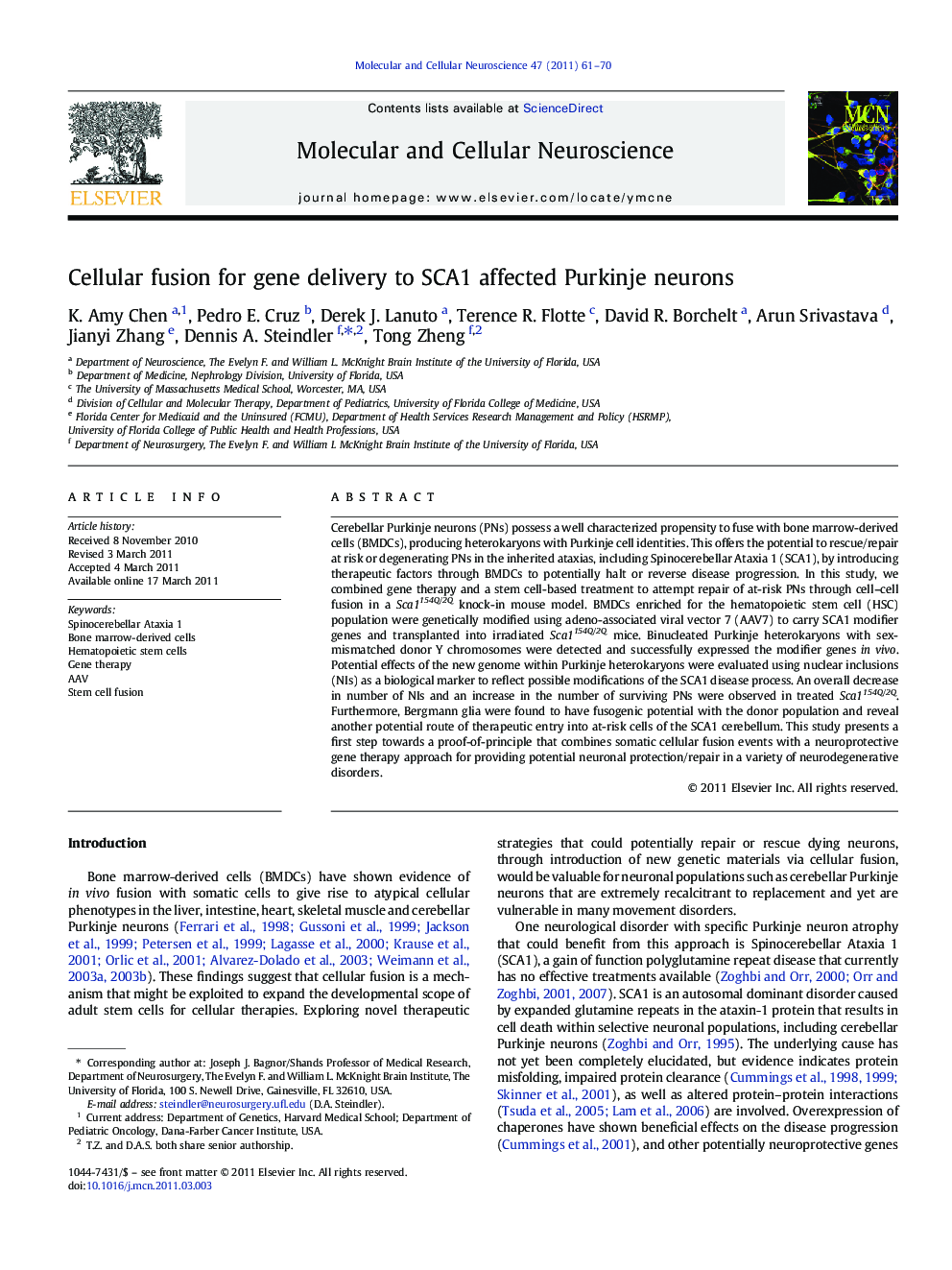| Article ID | Journal | Published Year | Pages | File Type |
|---|---|---|---|---|
| 2198731 | Molecular and Cellular Neuroscience | 2011 | 10 Pages |
Cerebellar Purkinje neurons (PNs) possess a well characterized propensity to fuse with bone marrow-derived cells (BMDCs), producing heterokaryons with Purkinje cell identities. This offers the potential to rescue/repair at risk or degenerating PNs in the inherited ataxias, including Spinocerebellar Ataxia 1 (SCA1), by introducing therapeutic factors through BMDCs to potentially halt or reverse disease progression. In this study, we combined gene therapy and a stem cell-based treatment to attempt repair of at-risk PNs through cell–cell fusion in a Sca1154Q/2Q knock-in mouse model. BMDCs enriched for the hematopoietic stem cell (HSC) population were genetically modified using adeno-associated viral vector 7 (AAV7) to carry SCA1 modifier genes and transplanted into irradiated Sca1154Q/2Q mice. Binucleated Purkinje heterokaryons with sex-mismatched donor Y chromosomes were detected and successfully expressed the modifier genes in vivo. Potential effects of the new genome within Purkinje heterokaryons were evaluated using nuclear inclusions (NIs) as a biological marker to reflect possible modifications of the SCA1 disease process. An overall decrease in number of NIs and an increase in the number of surviving PNs were observed in treated Sca1154Q/2Q. Furthermore, Bergmann glia were found to have fusogenic potential with the donor population and reveal another potential route of therapeutic entry into at-risk cells of the SCA1 cerebellum. This study presents a first step towards a proof-of-principle that combines somatic cellular fusion events with a neuroprotective gene therapy approach for providing potential neuronal protection/repair in a variety of neurodegenerative disorders.
